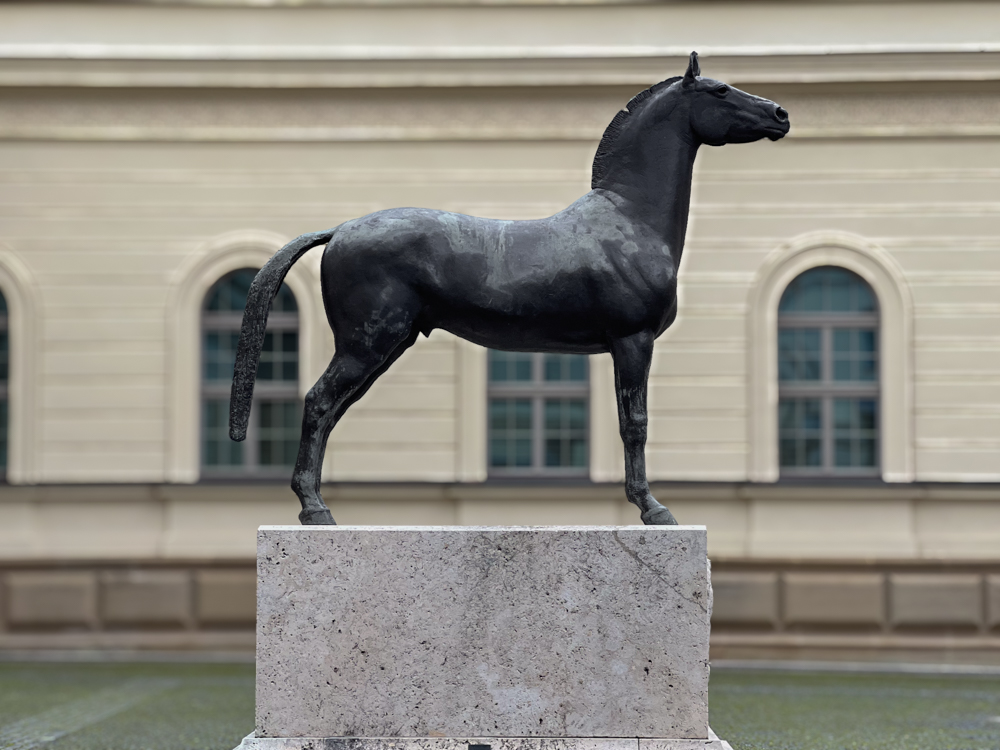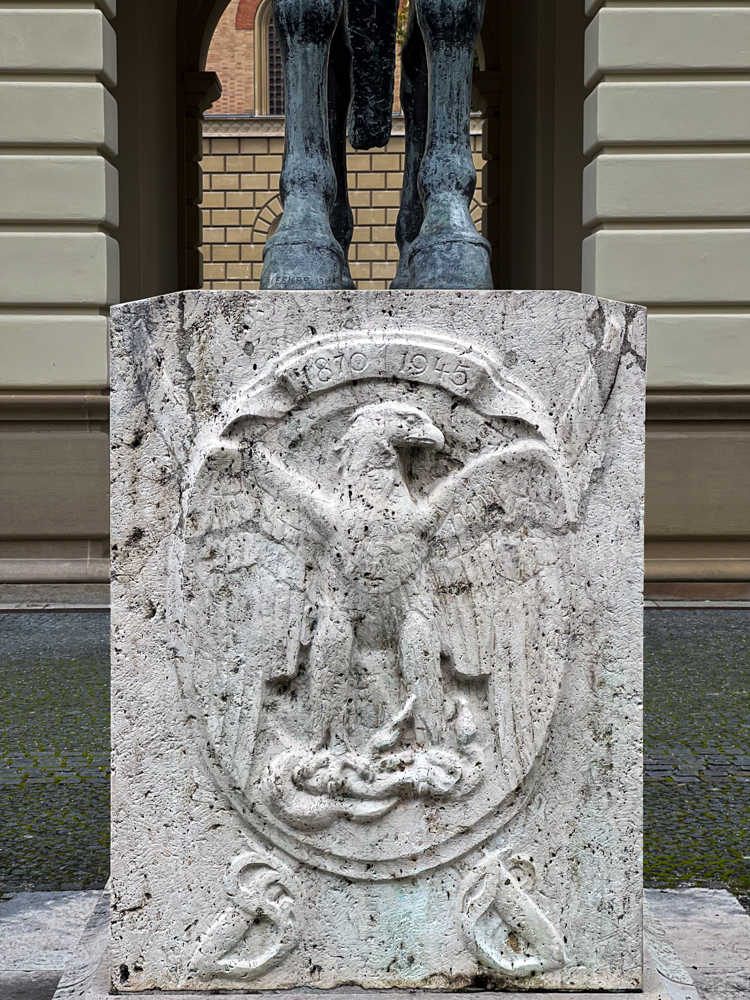This era marked Munich’s transformation from a regional capital to a city of national and international importance. It witnessed the city’s cultural and economic flowering, followed by its central role in some of the darkest chapters of German history. The period encapsulates Munich’s journey through imperial grandeur, democratic experimentation, totalitarian rule, and ultimately, wartime devastation.

The statue of this horse appears to serve as a memorial to a complex period in German history, using the classical symbol of the horse to represent both power and transformation over time.

The inscription on the pedestal highlights the period between 1870 and 1945, a tumultuous and transformative era for Munich, Bavaria. These dates mark two pivotal moments in German history:
- 1870 represents the unification of Germany and establishment of the German Empire
- 1945 marks the end of World War II and Nazi Germany
The horse statue carries multiple layers of symbolism, first as a traditional symbol of power:
- Horses in public art historically represented wealth, power, and dominance
- In pre-industrial Europe, equestrian statues were commonly used to symbolize authority and leadership
Second, as a memorial, the stark black horse without a rider could represent:
- The absence of leadership or fallen power
- A period of German history that has passed
- A memorial to a transformative period in German history
Artistically, the statue’s design is notable for several elements:
- The horse stands alone without a rider, which is unusual for official monuments
- Its black coloring and dignified pose create a solemn, memorial-like quality
- The placement on a simple stone pedestal emphasizes the horse’s form
The placement outside the Staatsarchiv München (State Archives) is meaningful because:
- State archives preserve historical documents and records
- The statue serves as a visual marker of the historical period whose records are likely housed within
- It connects the building’s function as a keeper of history with a symbolic representation of that history
Leave a Reply